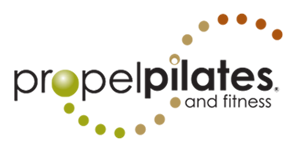Can Pilates help with osteoporosis?
Approximately 10 million Americans suffer from osteoporosis while another 44 million suffer from low bone density or osteopenia, putting them at risk for developing osteoporosis. Primarily affecting post-menopausal Caucasian women, individuals who are affected by osteoporosis have low bone mass and/or brittle bones which can lead to fractures and breaks, primarily in the hips and spine.
According to the National Osteoporosis Foundation (NOF), osteoporosis is responsible for an estimated two million broken bones per year. A person suffering from osteoporosis can break a bone from a minor fall, or in more serious cases, from a simple action such as sneezing or bumping into something.
Diet, exercise, and maintaining a healthy lifestyle are key to preventing or managing osteoporosis. The NOF recommends taking 5 important steps to help improve your bone health to prevent osteoporosis and broken bones:
- Get the RDA of calcium and Vitamin D every day
- Do regular weight-bearing and muscle strengthening exercises
- Do not smoke or drink alcohol to excess
- Discuss your risk of developing osteoporosis with your healthcare provider, and ask when you should have a bone density test
- Take an osteoporosis medication when it’s the right time for you
Pilates exercises are great for your bones
Being physically active and maintaining a regular exercise routine helps to keep your bones strong and healthy throughout your life, but especially after age 50 when bone loss starts to outpace bone formation. Exercise and safe movement can help with bone health and osteoporosis by:
- Promoting bone and muscle strength
- Keeping you balanced
- Caring for your back
So, how do Pilates exercises help? Pilates is a great way to strengthen your body and establish more efficient patterns of movement as well as helping to align your joints and axial skeleton. Pilates also focuses on balance and flexibility so that you’re less likely to lose your balance, and if you do, you’re more likely to be able to catch yourself before falling.
Pilates exercises are designed to strengthen your core muscles which are your abdominals and those deep stabilizing muscles of your lower back and pelvis. With strong core muscles, you’ll expend less effort to maintain an upright position and reduce your risk of falling.
There are some Pilates exercise you should avoid if you suffer from osteopenia or osteoporosis:
- Rolling exercises
- Front or side bending exercises
- Rotation of the spine/spinal flexion exercises
Your bones need to work
Your bones stay strong if you give them “work” to do. The best formula for bone strengthening combines weight-bearing exercises with resistance exercises that cause your muscles to pull on your bones to make them “work.”
Adding Pilates complements both types of bone-loading exercises by strengthening your core, improving your flexibility, balance, and posture, which helps to prevent falling.
At Propel Pilates and Fitness, located in North County, we offer both mat Pilates as well as equipment Pilates which utilize springs to change the workload and provide resistance. Our instructors will work with you to design a Pilates program to help reduce your risk of osteoporosis or help in your treatment if you’ve already been diagnosed.
